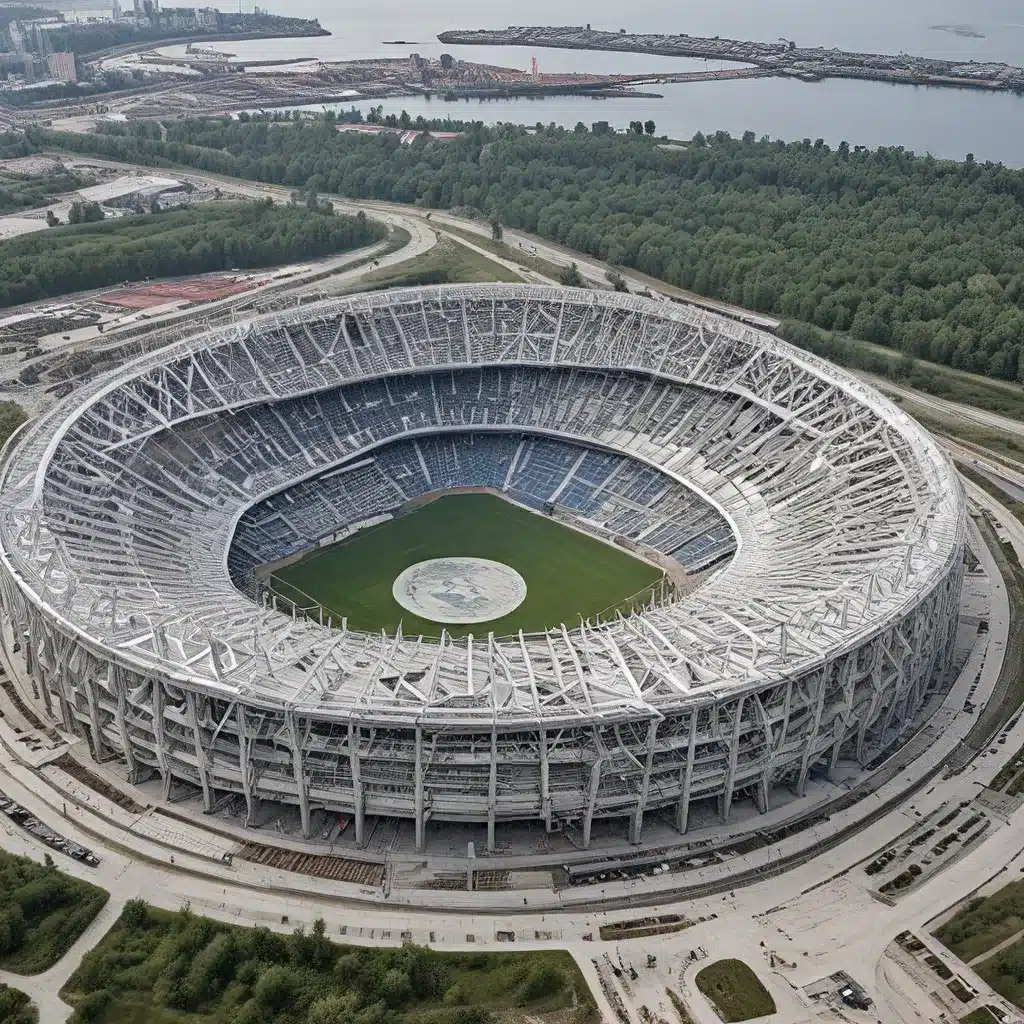
A Modest Yet Remarkable Venue
The Kaliningrad Stadium, located in the Russian exclave of Kaliningrad, is a unique and intriguing stadium that has captured the attention of football enthusiasts worldwide. While it may not boast the grandeur or scale of some of its more renowned counterparts, this stadium’s story is one of resilience, innovation, and the triumph of pragmatism over excess.
Amidst the ever-growing list of extravagant and ostentatious sports arenas that have become the hallmark of modern football, the Kaliningrad Stadium stands out as a refreshing departure from the norm. Rather than succumbing to the temptation of lavish displays of wealth and power, the architects behind this stadium have embraced a more modest and functional approach, prioritizing practicality and sustainability over sheer opulence.
A Stadium Built for the People
The Kaliningrad Stadium is a testament to the belief that a sports venue can be both functional and aesthetically pleasing, without the need for excessive ornamentation or grandiose architectural statements. The stadium’s design, which features clean lines, a sleek profile, and a focus on maximizing the fan experience, has been widely praised for its practical and user-centric approach.
One of the defining features of the Kaliningrad Stadium is its capacity of just 35,000 seats, a relatively modest number compared to the behemoth stadiums that have become the norm for major international football tournaments. This decision, made in the face of pressure to construct a larger venue, reflects a deeper understanding of the local community’s needs and the realities of the region’s football landscape.
By opting for a more modest capacity, the architects and organizers have ensured that the stadium will not become a white elephant, a fate that has befallen many grand sports arenas around the world. Instead, the Kaliningrad Stadium is designed to be a vibrant and accessible hub for the local community, catering to the needs of both avid football fans and casual spectators.
Innovative Design and Sustainability
The Kaliningrad Stadium’s commitment to practicality and sustainability extends far beyond its seating capacity. The stadium’s design features a number of innovative elements that set it apart from its peers, including a unique and energy-efficient cooling system that uses the nearby Baltic Sea as a natural heat sink.
This cutting-edge approach to temperature regulation not only enhances the fan experience by providing a comfortable environment during the often-harsh Russian summers, but it also reduces the stadium’s environmental impact, making it a more sustainable and environmentally-friendly venue.
Furthermore, the Kaliningrad Stadium’s construction process has been carefully planned to minimize waste and maximize the use of local materials. This commitment to sustainability is a testament to the stadium’s broader vision of being a facility that not only serves the needs of the local community but also respects the natural environment in which it is situated.
A Legacy of Resilience and Adaptability
The Kaliningrad Stadium’s story is not without its challenges, however. The stadium’s construction was initially plagued by delays and budgetary concerns, as is often the case with major infrastructure projects of this scale. Yet, through a combination of determination, innovation, and a willingness to adapt, the project’s organizers have managed to overcome these obstacles and deliver a stadium that is both functional and visually striking.
One of the most remarkable aspects of the Kaliningrad Stadium’s journey is its ability to evolve and adapt to the changing needs of the local community. Rather than remaining a static and inflexible structure, the stadium’s design incorporates features that allow it to be easily reconfigured and repurposed to accommodate a wide range of events and activities.
A Beacon of Hope and Inspiration
As the world of football continues to be dominated by the ever-escalating arms race of stadium construction, the Kaliningrad Stadium stands as a beacon of hope and inspiration. It serves as a reminder that a sports venue can be more than just a grand spectacle; it can be a living, breathing part of the community it serves, a place that embodies the values of sustainability, accessibility, and a genuine connection to the local population.
The Kaliningrad Stadium’s story is one of resilience, innovation, and the triumph of practical solutions over excessive displays of wealth. It is a testament to the belief that a sports venue can be both functional and aesthetically pleasing, without the need for grandiose architectural statements or ostentatious displays of power.
As the world of football continues to evolve, the Kaliningrad Stadium’s legacy will undoubtedly inspire other cities and organizers to rethink the way they approach the design and construction of sports arenas. By prioritizing the needs of the community, embracing sustainable practices, and focusing on creating a truly inclusive and accessible venue, the Kaliningrad Stadium has set a new standard for what a modern football stadium can and should be.

